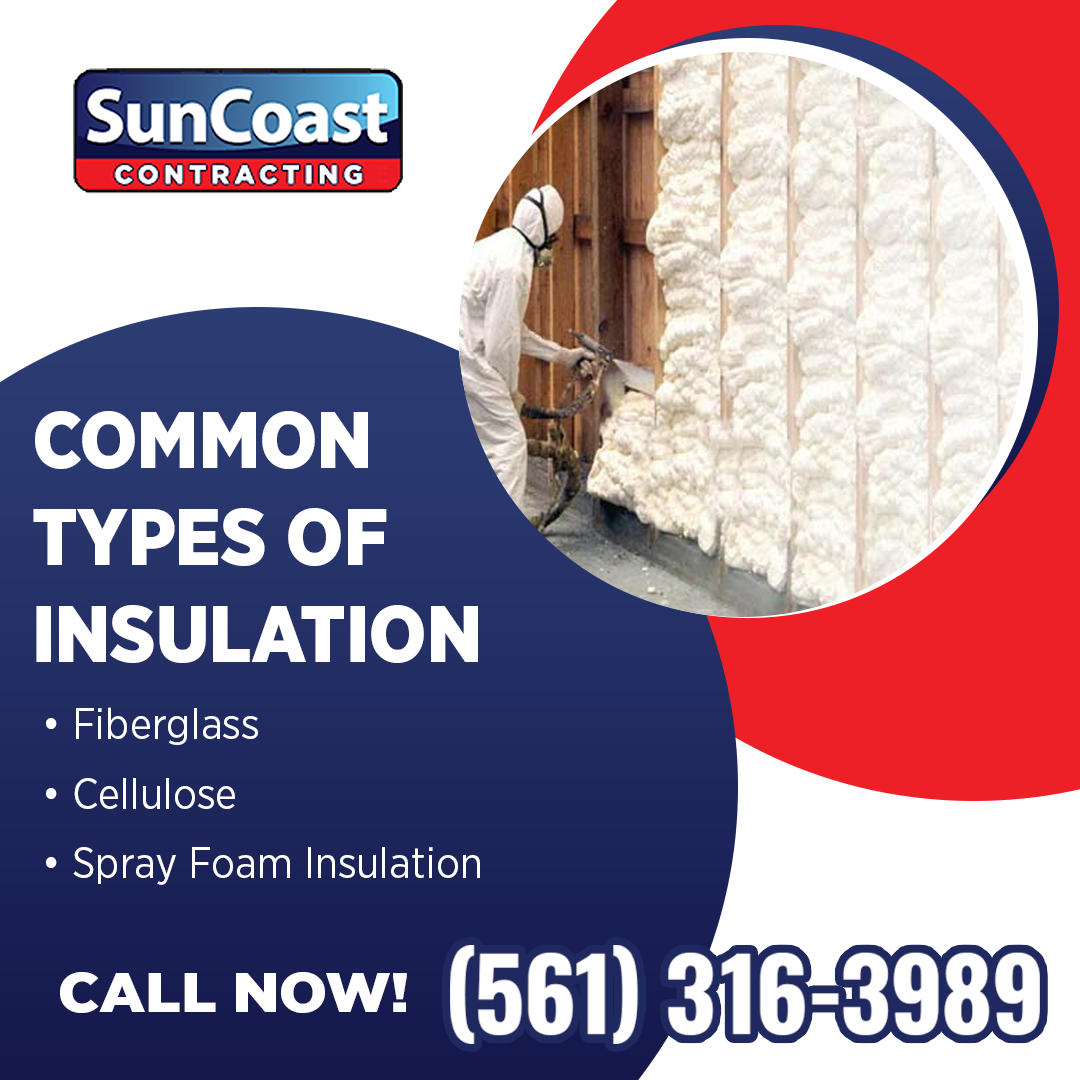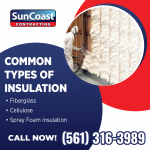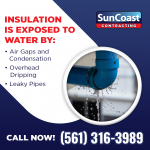Homes shelter inhabitants from the cold, heat, and other external elements. Insulation of homes is done to make them more comfortable and it also keeps costs of heating and cooling low. Energy efficient homes are preferred by more people now because they are environment friendly. Insulation helps make homes energy-efficient.
Insulation is chosen for each building based on the budget, needs of the occupants, and climate of the locale. To serve its desired purpose the insulation must work efficiently. Water damage can make insulation ineffective. This article explains how insulation is affected by water damage. Suncoast Contractors Emergency Service Inc. has been serving South Florida residences and businesses and shares this information here.

What Insulation Does
Heating and cooling costs are reduced when insulation provides resistance to the heat flow. The comfort of a building is more with insulation that functions well. Insulation materials that slow heat flow by conduction and convection are the most commonly used. The resistance of insulating material to conductive heat flow is called it's R-value or thermal resistance. A higher R-value means the effectiveness of the insulation is also high.
Common Types Of Insulation:
Fiberglass
This comes in rolls and batts and can be installed easily. Its moisture resistance makes it ideal in humid environments. Its fire resistance and heat resistance make it safe. Fiberglass is renewable and this makes it an environment-friendly choice.
Cellulose
Cellulose is made of recycled paper and cardboard and is environment-friendly. It can be installed dry or wet. Though it is cheaper than fiberglass, installation is expensive. Cellulose is treated with boric acid before installation, which makes it unpalatable to insects. The material is fire and mold resistant. The R-value is less likely to fall as it is treated with an acrylic binder.
Spray Foam Insulation
This is a popular choice as it provides an airtight seal for cracks and gaps. Spray foam insulation is a water-resistant material and once it is hard does not allow water to permeate it. It retains its R-value for a long time and can outlive fiberglass or cellulose when installed properly. Spray foam insulation is resistant to mold growth.
Insulation Is Exposed To Water By:
- Air Gaps and Condensation
- Overhead Dripping
- Leaky Pipes
How Water Damage Affects Insulation
1. Insulating Property Is Compromised
Moisture causes an airflow collapse of materials like cellulose and fiberglass. This causes them to lose their insulation efficacy. The R-value can drop due to water damage.
2. Energy Bills Increase
Energy consumption increases when insulation is wet as it starts conducting electricity. As the efficiency of the insulation reduces heat moves out in winter and moves in during summer. The resulting increased use of a heater or air-conditioner leads to higher energy bills.
3. Mold Growth
Wet insulation is an ideal environment for mold to grow. From this mold spores spread to drywall, ceilings, wooden structures, and other parts of the building. The air quality is affected by mold and spores and can lead to health problems.
4. Off-gassing
There is a chemical called formaldehyde in some insulation materials like fiberglass. When exposed to water or humidity, this insulation can release formaldehyde in a vapor form. This can be bad for health. Off-gassing can also damage roof structures and rust bolts and studs.

When wall insulation is wet it can easily spread and also lead to mold growth. This makes it best to arrange for an immediate cleanup in case of water damage to insulation. In Gulf Stream, water damage can be handled by Suncoast Contractors Emergency Service Inc. The company provides mold remediation services as well. Suncoast Contractors guarantees knowledgeable, professional, and dedicated workers for water damage restoration and other services as well. They are available at (561) 316-3989 at any time to discuss clients' goals and provide advice and guidance.

































